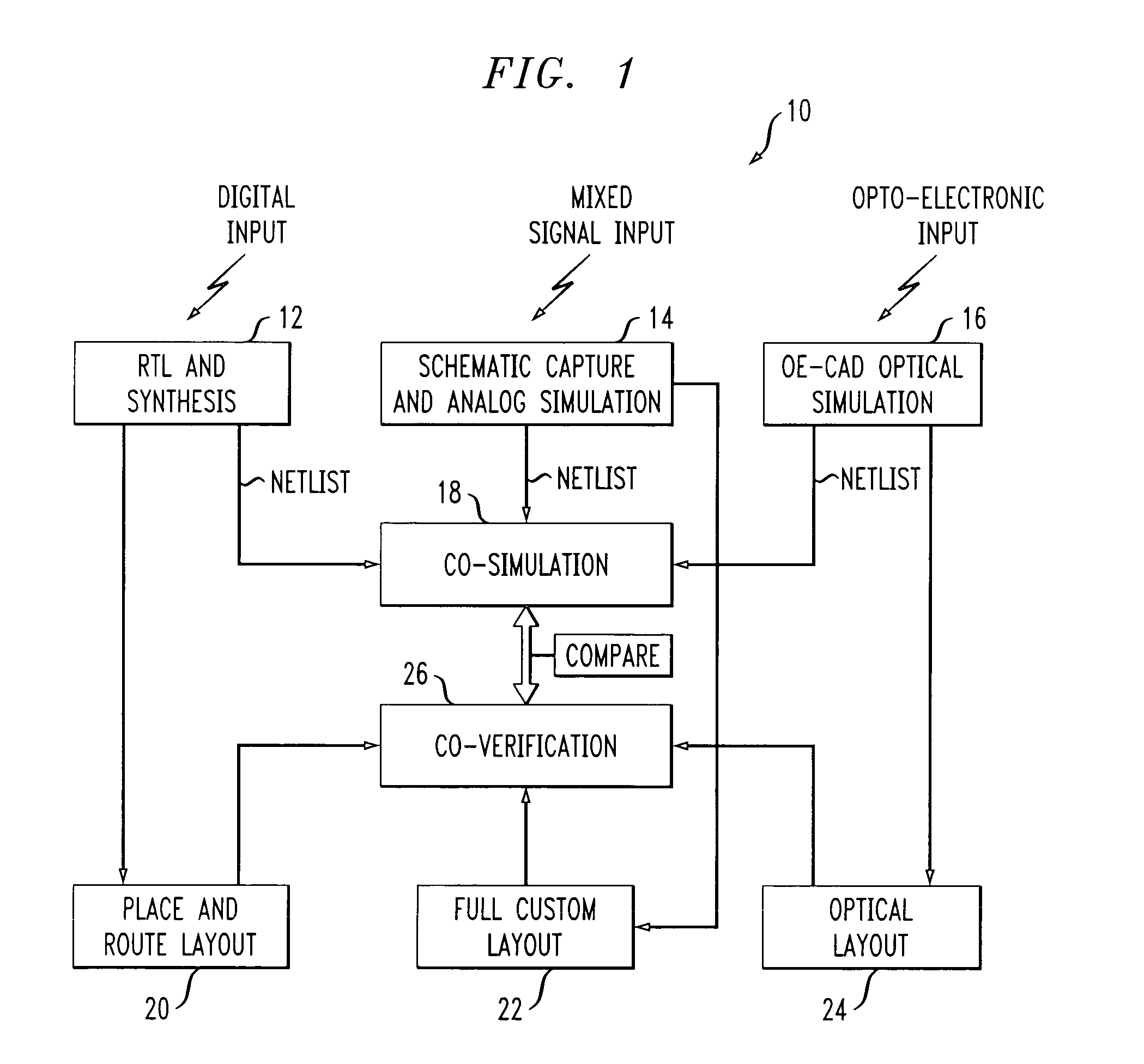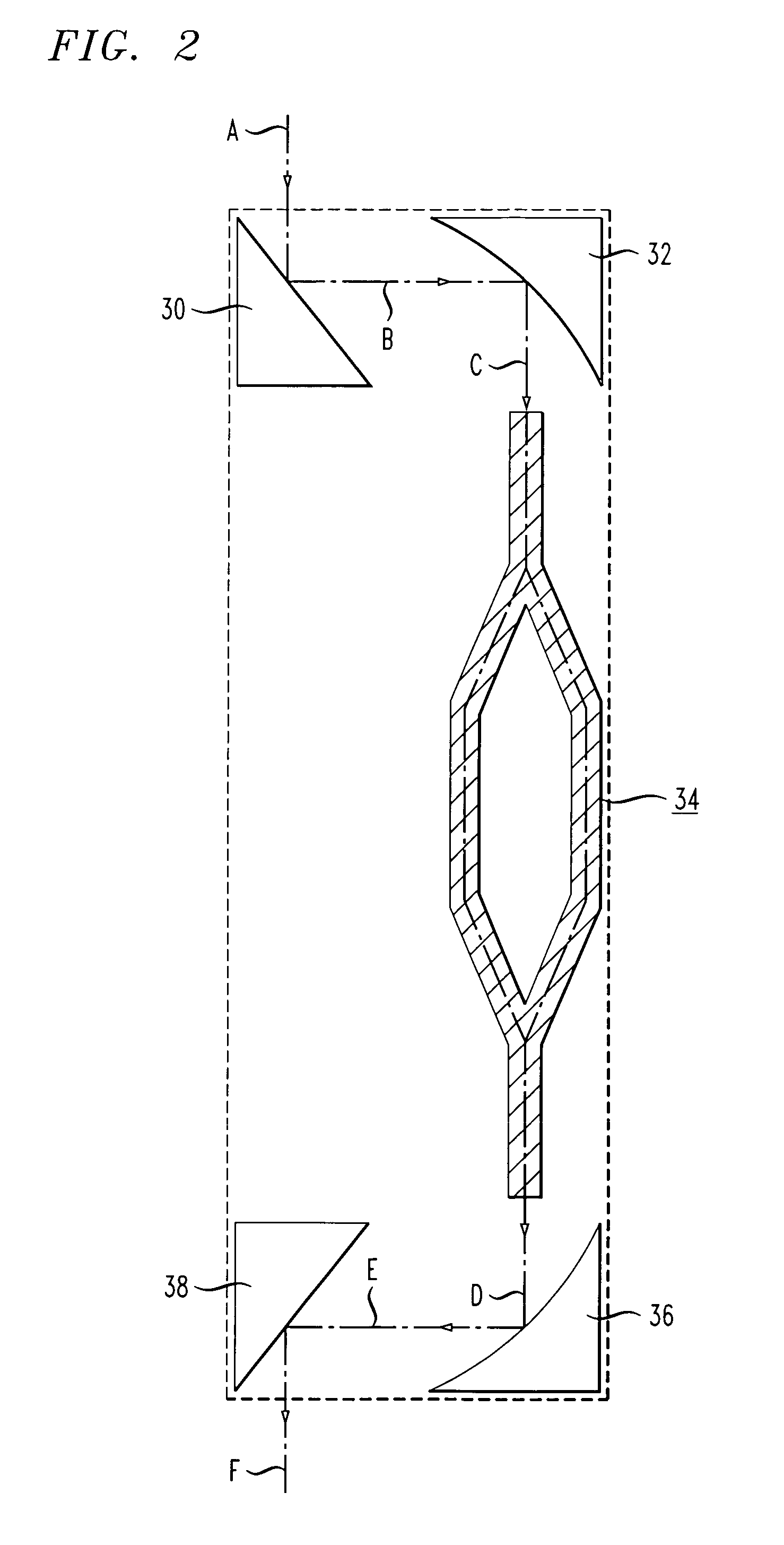Integrated approach for design, simulation and verification of monolithic, silicon-based opto-electronic circuits
a silicon-based opto-electronic circuit and integrated circuit technology, applied in the direction of electric/magnetic computing, instruments, analogue processes for specific applications, etc., can solve the problems of spice simulation extremely slow, pre-defined set of cells of a standard cell library may not provide the desired speed, size or power consumption,
- Summary
- Abstract
- Description
- Claims
- Application Information
AI Technical Summary
Benefits of technology
Problems solved by technology
Method used
Image
Examples
Embodiment Construction
[0022]In its most general sense, the present invention can be viewed as performing separate top-level behavioral logic designs for the three different types of elements included within the final, silicon-based monolithic structure. The three different types of elements, as mentioned above, can be defined as: (1) digital electronic integrated circuit elements; (2) analog / mixed signal electronic integrated circuit elements; and (3) opto-electronic elements (including passive and active optical elements). Once the behavioral logic design is completed, the results are combined and co-simulated. A physical layout design is developed and verified for each different type of element in the circuit. The separate physical layouts are then co-verified, using a pre-defined set of test vectors, to measure the properties of the overall physical design. The annotated results (complete with definitions of parasitic capacitances and resistances, for example) is then re-simulated and compared with th...
PUM
 Login to View More
Login to View More Abstract
Description
Claims
Application Information
 Login to View More
Login to View More - R&D
- Intellectual Property
- Life Sciences
- Materials
- Tech Scout
- Unparalleled Data Quality
- Higher Quality Content
- 60% Fewer Hallucinations
Browse by: Latest US Patents, China's latest patents, Technical Efficacy Thesaurus, Application Domain, Technology Topic, Popular Technical Reports.
© 2025 PatSnap. All rights reserved.Legal|Privacy policy|Modern Slavery Act Transparency Statement|Sitemap|About US| Contact US: help@patsnap.com



